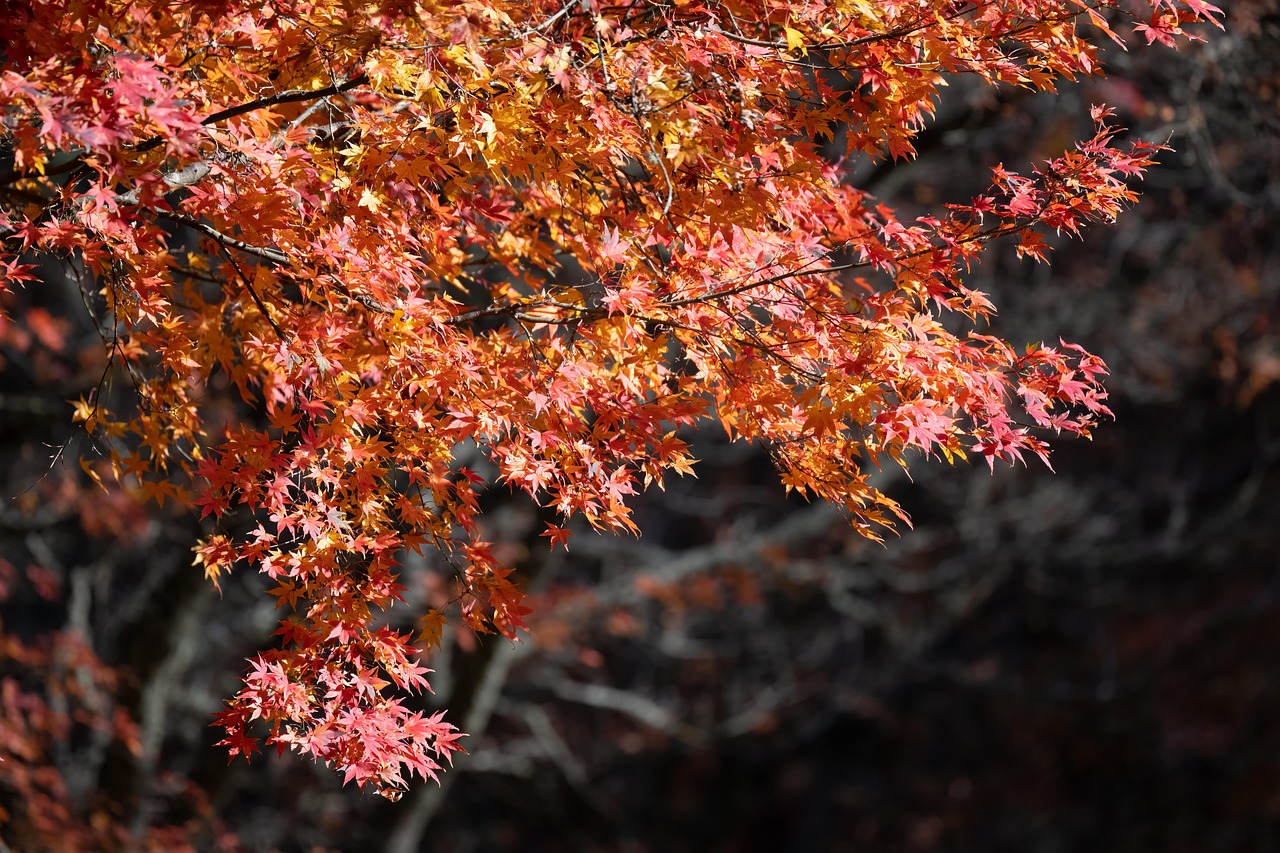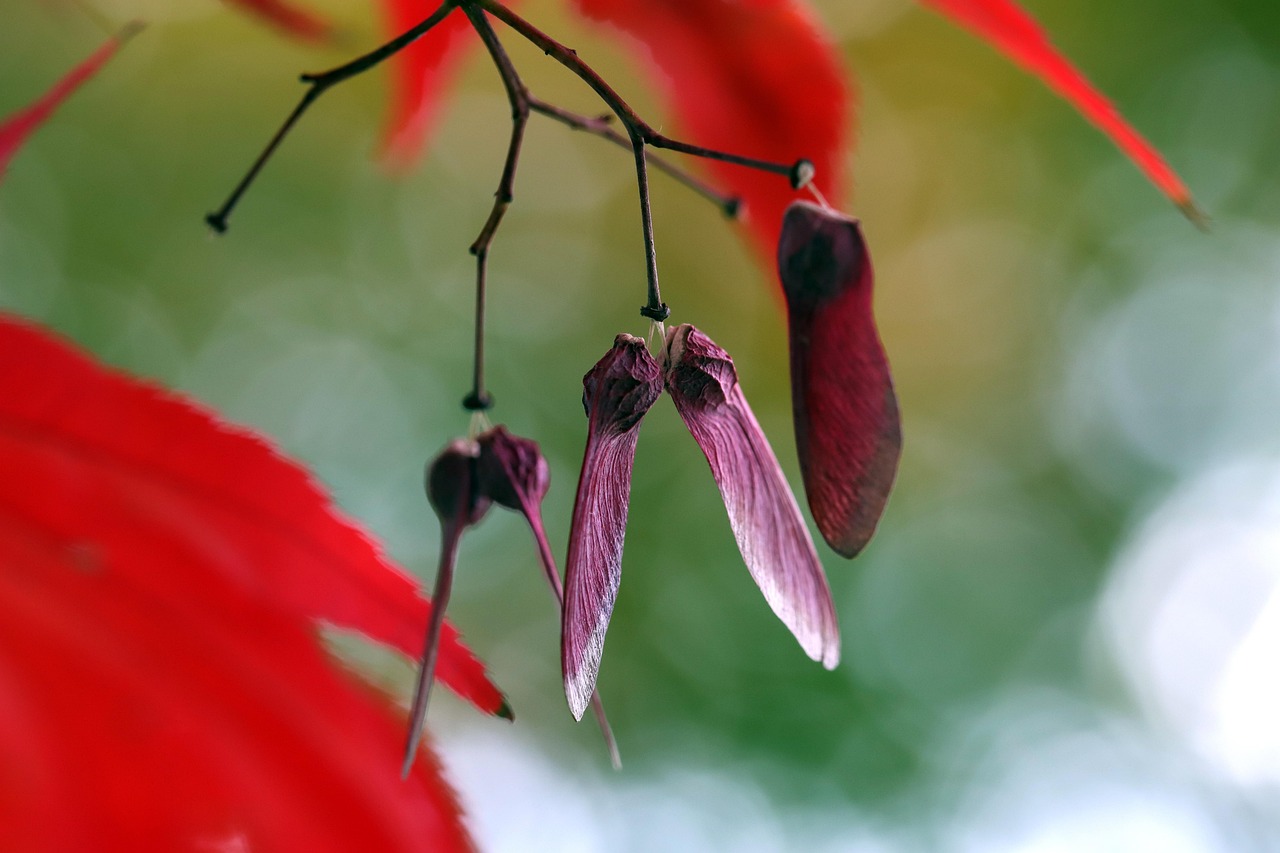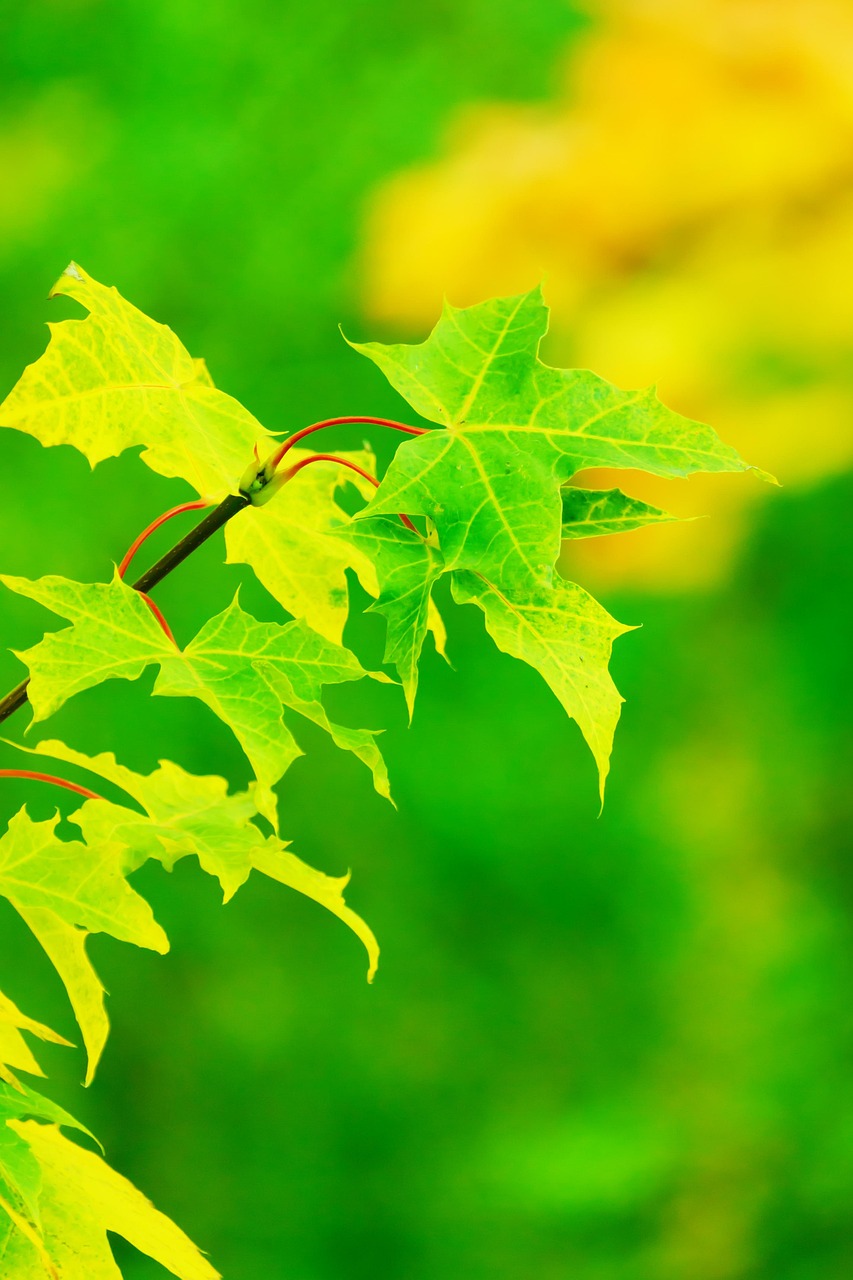To grow a healthy maple tree, choose the right species for your climate, provide ample sunlight, and ensure well-drained soil. Regular watering, proper fertilization, and timely pruning will promote robust growth. Additionally, monitoring for pests and diseases will help maintain the tree’s health.
Maple trees are cherished for their stunning foliage and strong wood. They are a popular choice for landscaping due to their beauty and adaptability. However, successful cultivation requires understanding the specific needs of these trees. Different species of maple have varying growth habits and environmental preferences, making it essential to select the right variety for your location.
Maples thrive in a range of climates but generally prefer temperate zones. They are often found in forests, parks, and urban environments. The most common species include the Sugar Maple, Red Maple, and Silver Maple. Each species offers unique characteristics that may influence your choice depending on your gardening goals.
Understanding Maple Tree Varieties

Choosing the right variety is crucial for successful maple tree growth. Here are some popular types:
| Maple Species | Characteristics | Ideal Conditions |
|---|---|---|
| Sugar Maple | Known for its brilliant fall color and high-quality syrup. | Prefers well-drained soil and full sun. |
| Red Maple | Fast-growing with striking red foliage in autumn. | Thrives in wet to average soil conditions. |
| Silver Maple | Fast-growing with a broad canopy, good for quick shade. | Adaptable to various soil types but prefers moist conditions. |
Once you have chosen the right species, the next step is to prepare the planting area. Maple trees prefer slightly acidic to neutral soil with good drainage. Before planting, it is advisable to test the soil pH and amend it if necessary. Adding organic matter can enhance soil structure and nutrient content.
Planting a maple tree requires careful attention to timing and technique. Early spring or fall is the best time for planting. When digging the hole, it should be twice as wide as the root ball but not deeper than the root system itself. This allows the roots to spread easily while preventing water from pooling around them.
Watering is essential for newly planted maples. They require regular moisture until they establish deep roots. A deep watering once a week is generally recommended during dry periods. Mulching around the base will help retain soil moisture and suppress weeds while also providing an aesthetic appeal.
Fertilization also plays a significant role in ensuring healthy growth. A balanced fertilizer can be applied in early spring before new growth begins. This will provide essential nutrients that support vigorous growth and development.
In summary, growing a healthy maple tree involves careful selection of species, soil preparation, proper planting techniques, and ongoing care including watering and fertilization. By following these guidelines, you will be well on your way to cultivating a thriving maple tree that enhances your landscape.
Pruning and Maintenance Techniques
Regular pruning is essential for maintaining the health and shape of your maple tree. It ensures that the tree grows strong and can prevent issues related to overcrowding or disease. Proper pruning techniques will also enhance the tree’s aesthetic appeal.
When to Prune
The best time to prune a maple tree is during its dormant season, which typically occurs in late winter or early spring before new growth begins. Pruning during this time minimizes stress on the tree and allows for quicker healing. Avoid heavy pruning in the fall, as this can lead to excessive sap loss and weaken the tree.
Pruning Techniques
Here are some effective techniques for pruning your maple tree:
- Remove Dead or Diseased Branches: Start by cutting away any dead, damaged, or diseased branches. This helps to prevent the spread of disease and promotes healthy growth.
- Thin Out Crowded Branches: If branches are crossing or crowding each other, thin them out to allow better air circulation and sunlight penetration. This reduces the risk of fungal infections.
- Shape the Canopy: Maintain a desirable shape by selectively trimming branches. Aim for an open center that facilitates airflow and light distribution.
Use clean, sharp pruning shears to make cuts. Always cut at a slight angle to prevent water accumulation on the cut surface, which can lead to rot.
Pest and Disease Management
Pest and disease management is crucial for keeping your maple tree healthy. Several common pests and diseases can affect maples, but most can be managed with proactive measures.
Common Pests
Here are a few pests that may target maple trees:
- Aphids: These small insects suck sap from leaves, leading to yellowing and curling. Natural predators like ladybugs can help control their population.
- Scale Insects: Scale may appear as small bumps on branches and leaves. They can be managed with horticultural oils or insecticidal soaps.
- Borers: These pests tunnel into the wood, causing significant damage. Look for signs such as wilted leaves or sawdust at the base of the tree.
Common Diseases
Maple trees can also be susceptible to various diseases:
- Leaf Spot: This fungal infection causes dark spots on leaves, leading to premature leaf drop. Proper spacing and good air circulation help prevent this issue.
- Powdery Mildew: A white, powdery substance on leaves indicates this fungal disease. Ensuring adequate sunlight can help reduce its incidence.
- Canker Diseases: These involve dead areas on branches or trunks. Remove affected areas promptly to prevent spread.
Regular monitoring of your maple tree for signs of pests and diseases is vital. Early detection allows for effective intervention, preserving the health of your tree.
Watering Practices for Optimal Growth
Watering practices greatly influence the health of your maple tree. While newly planted trees need regular watering, established trees have different requirements.
Watering Newly Planted Maples
Newly planted maples require consistent moisture to establish roots. Here are guidelines for watering them:
- Frequency: Water deeply once a week, more often during hot and dry conditions.
- Method: Use a soaker hose or drip irrigation to deliver water directly to the root zone.
- Amount: Ensure the soil is moist but not soggy, as excessive water can lead to root rot.
Watering Established Maples
Once established, maple trees generally require less frequent watering. However, they still benefit from deep watering during prolonged dry spells. Understanding the signs of water stress is important:

- Curling Leaves: Indicates the tree may need water.
- Wilting: A sign that the roots are not receiving sufficient moisture.
By following these pruning, pest management, and watering techniques, you will foster a thriving environment for your maple tree, ensuring its health and beauty for years to come.
Fertilization Strategies for Maple Trees

Fertilizing your maple tree is crucial for promoting healthy growth and vibrant foliage. The right nutrients will enhance the tree’s health, allowing it to withstand pests, diseases, and environmental stressors. Understanding when and how to fertilize is essential for optimal results.
Understanding Nutrient Needs
Maple trees require a balanced supply of macronutrients and micronutrients for healthy growth:
- Nitrogen (N): Promotes leafy growth and overall vigor. Essential during the early stages of growth.
- Phosphorus (P): Supports root development and enhances flower and fruit production.
- Potassium (K): Aids in water regulation, disease resistance, and overall tree health.
- Micronutrients: Elements like iron, magnesium, and manganese are crucial in smaller amounts for various physiological functions.
When to Fertilize
The timing of fertilization can significantly affect the growth of maple trees. Here are the recommended periods:
- Early Spring: Apply fertilizer just before new growth begins. This timing aligns with the tree’s natural growth cycle.
- Late Summer: A second application can be made in late summer to promote root growth before the winter dormancy period.
Types of Fertilizers
There are various types of fertilizers available for maple trees. Selecting the right one is important:
- Granular Fertilizers: Slow-release fertilizers provide a steady supply of nutrients over time. They are easy to apply and require less frequent application.
- Liquid Fertilizers: These fast-acting fertilizers can quickly boost nutrient levels but may need more frequent applications.
- Organic Options: Compost or well-rotted manure can enrich the soil naturally. Organic amendments improve soil structure and promote beneficial microbial activity.
Mulching for Healthier Maple Trees
Mulching is an effective practice that can greatly benefit maple trees. It helps retain moisture, suppress weeds, and improve soil quality. Proper mulching techniques can enhance the overall health of your maple tree.
Benefits of Mulching
Using mulch around your maple tree offers several advantages:
- Moisture Retention: Mulch helps retain soil moisture, reducing the frequency of watering needed.
- Weed Suppression: A thick layer of mulch prevents weeds from competing for nutrients and water.
- Soil Temperature Regulation: Mulch keeps the soil cooler in summer and warmer in winter, creating a stable environment for roots.
- Nutrient Enrichment: As organic mulch breaks down, it adds nutrients back into the soil, improving fertility over time.
How to Apply Mulch
Applying mulch correctly is key to maximizing its benefits:
- Select the Right Material: Use organic materials such as wood chips, straw, or shredded bark for best results.
- Apply a Layer: Spread a 2-4 inch layer of mulch around the base of the tree, keeping it away from the trunk to prevent rot.
- Replenish Regularly: Organic mulch decomposes over time. Replenish it annually to maintain effective coverage and benefits.
Environmental Factors Affecting Growth

The environment plays a crucial role in the growth and health of maple trees. Understanding these factors can help you create a more conducive growing environment.
Light Requirements
Maple trees generally prefer full sun to partial shade. Adequate sunlight is essential for photosynthesis and overall tree vitality. Here are some considerations:
- Full Sun: Most species thrive with at least 6 hours of direct sunlight each day.
- Partial Shade: While some maples can tolerate shade, growth may be slower and foliage less vibrant.
Soil Conditions
The type of soil and its drainage capabilities significantly impact maple health. Key points include:
- Adequate Drainage: Maples prefer well-drained soils to avoid root rot.
- Slightly Acidic pH: A pH level between 6.0 and 7.0 is ideal for most maple species.
By implementing proper fertilization strategies, mulching techniques, and understanding environmental factors, you can ensure robust growth and vitality in your maple trees.
Seasonal Care for Maple Trees
As seasons change, so do the care requirements for your maple trees. Understanding how to adapt your maintenance practices throughout the year can significantly influence the health and growth of your trees.
Spring Care
Spring is a critical time for maple trees as they begin their active growth phase. Here are some essential tasks to consider:
- Inspect for Damage: Check for any winter damage, such as broken branches or signs of disease.
- Pruning: This is the ideal time to prune any dead or overcrowded branches to encourage healthy growth.
- Fertilizing: Apply a balanced fertilizer to support new growth and prepare the tree for the growing season.
Summer Care
During the summer, the focus shifts to maintaining hydration and monitoring for pests:
- Watering: Ensure your maple trees receive adequate moisture, especially during hot and dry spells. Deep watering is crucial at this time.
- Pest Monitoring: Keep an eye out for common pests and diseases. Early intervention can prevent serious damage.
- Mulching: Maintain a fresh layer of mulch to retain soil moisture and suppress weeds.
Autumn Care
As leaves change color and fall, preparing your maple trees for winter becomes important:
- Leaf Cleanup: Rake fallen leaves to prevent fungal diseases and pests from overwintering in your garden.
- Watering: Continue watering until the ground freezes, ensuring that your trees are hydrated before winter dormancy.
- Soil Testing: Autumn is a good time to test soil pH and nutrient levels. This information can guide spring fertilization strategies.
Winter Care
During winter, maple trees enter dormancy, but there are still care practices to follow:
- Protection from Cold: If you live in a region with harsh winters, consider wrapping young trees with burlap for protection against extreme cold and wind.
- Check for Pests: Inspect the tree for any pests that may have survived the winter. Remove any visible infestations promptly.
Final Thoughts
Cultivating a healthy maple tree requires attention to detail and knowledge of best practices. From selecting the right species and providing adequate nutrition to understanding seasonal needs, each step is vital for ensuring robust growth and longevity.
The key takeaways for successful maple tree cultivation include:
- Selecting the Right Species: Choose a variety that thrives in your climate and soil conditions.
- Implementing Proper Care: Regular pruning, watering, fertilizing, and mulching are essential for maintaining tree health.
- Monitoring Environmental Factors: Pay attention to light, soil conditions, and seasonal changes to adapt your care practices accordingly.
By following these guidelines, you will not only enhance the beauty of your landscape but also ensure that your maple trees thrive for generations. With patience and dedication, your maple trees can become a cherished part of your outdoor space, providing shade, beauty, and enjoyment throughout the years.
